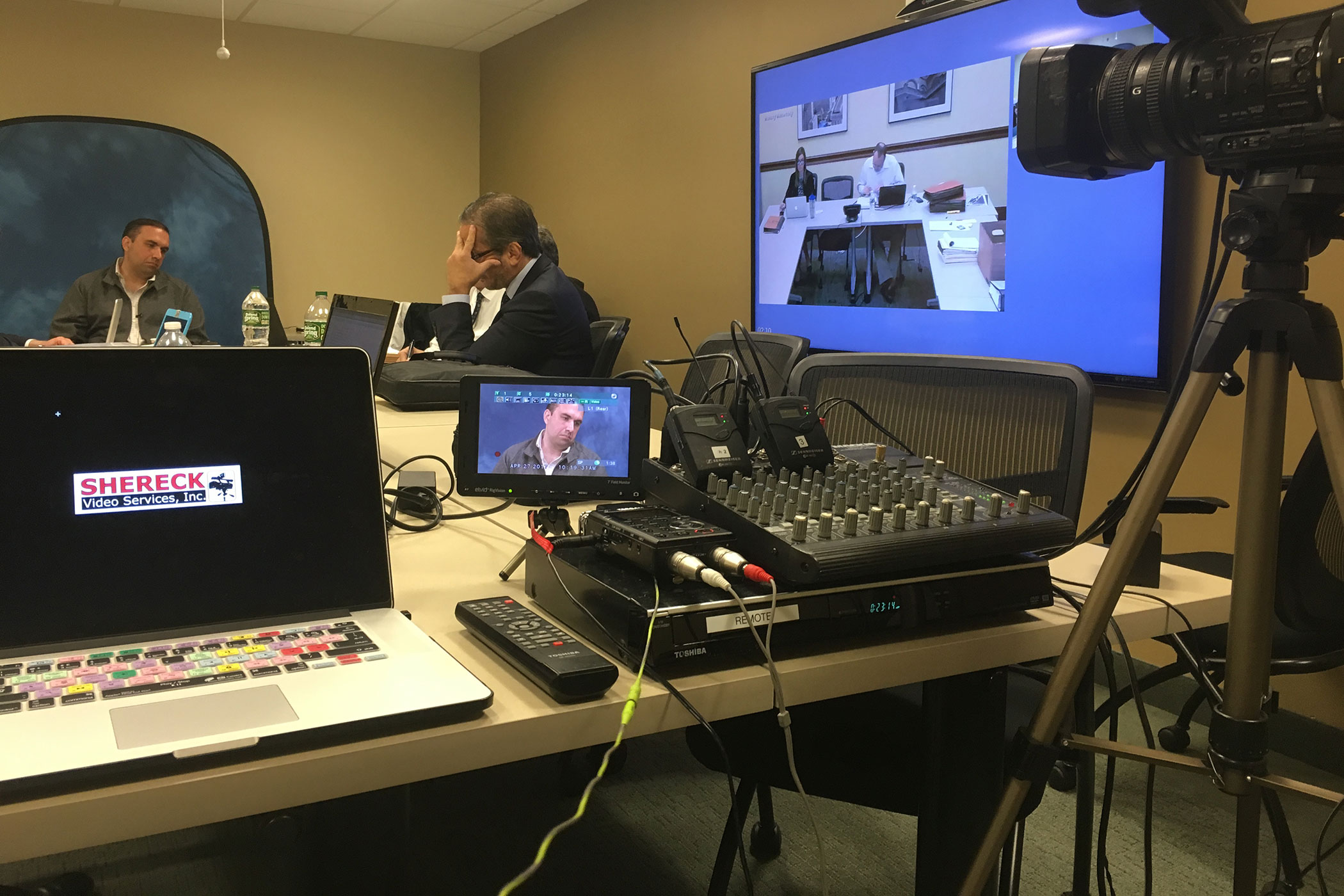Legal Videography: Transforming the Way Evidence is Recorded and Offered
Wiki Article
Looking Into the Systems of Lawful Videography: Introduction Its Operation in Safeguarding Authentic Aesthetic Testament for Judicial Process
In the world of judicial procedures, the duty of legal videography stands as a keystone in protecting and offering visual proof. As technology proceeds to advance, the systems behind legal videography have come to be progressively detailed, providing an essential layer of credibility to testimonies caught on video clip.Historical Development of Legal Videography
Checking out the historical development of lawful videography reveals a substantial transformation in the recording and discussion of aesthetic evidence within the legal landscape. In the past, legal process greatly counted on composed pictures and transcripts to document events and supply proof. With the introduction of video clip technology, the legal industry saw a paradigm shift in exactly how aesthetic statement was captured and presented.The development of legal videography can be traced back to the late 20th century when innovations in video clip recording tools made it more easily accessible for usage in courts. This technical improvement not just improved the precision and integrity of aesthetic proof yet additionally revolutionized the way cases existed to discretionary (Legal Videography). Lawyers started to acknowledge the convincing power of video recordings in conveying emotions, subtleties, and non-verbal hints that composed pictures or transcripts alone could not capture properly

Technology Developments in Video Documents
What vital technical innovations have changed video clip paperwork in the legal field? The lawful area has seen significant advancements in video documents modern technology that have actually improved the authenticity and integrity of visual evidence in judicial process. One of the key advancements is high-def (HD) video recording capabilities, which give crystal-clear pictures and sharp details that are crucial for properly catching testimonies, faces, and other aesthetic hints. Additionally, the combination of timestamping and metadata features in video clip paperwork devices has actually made it possible for accurate documentation of when and where the video was tape-recorded, making sure the integrity of the proof presented in court.Moreover, improvements in video clip encryption and watermarking modern technologies have reinforced the protection and tamper-proof nature of video evidence, guarding it against unauthorized modifications or meddling. The advent of cloud storage services and remote gain access to abilities has structured the storage space, access, and sharing of video clip proof, facilitating seamless cooperation amongst legal specialists and guaranteeing reliable accessibility to crucial aesthetic testaments when required. These technical advancements in video clip documents have actually undoubtedly revolutionized the legal field, enhancing the precision, credibility, and admissibility of visual proof in judicial process.
Duty of Lawful Videographers in Court Settings
The evolution of video clip documents innovation in the legal area has necessitated an essential duty for lawful videographers in courtroom setups, making sure the honesty and integrity of aesthetic testimonies offered during judicial proceedings. Lawful videographers play a fundamental duty in catching and preserving exact visual proof that can be critical in lawsuit. Their obligation extends to establishing equipment, videotaping procedures, and generating top notch videos that properly reflect the occasions in the you can try this out courtroom.
Furthermore, legal videographers commonly function very closely with legal teams to guarantee that the video proof lines up with the instance's needs and i was reading this can be properly offered in court to support the legal arguments being made. Overall, the role of legal videographers in courtroom settings is essential in supporting the principles of justice and guaranteeing the transparency of legal proceedings. Legal Videography.

Ensuring Admissibility and Integrity of Video Clip Proof
To maintain the integrity of aesthetic evidence provided in lawful process, ensuring the admissibility and stability of video clip proof is an important responsibility for legal videographers. Admissibility refers to the approval of evidence by the court, and for video clip evidence to be admissible, it must satisfy specific criteria. Legal videographers play a vital duty in ensuring that the videos they catch follow the regulations of proof, such as authenticity, significance, and dependability.Integrity of video evidence involves keeping the creativity and precision of the video from the moment it is taped up until it exists in court. This includes securely storing the video clip documents, recording the chain of wardship, and protecting against any kind of meddling or modifications. Lawful videographers should stick to strict protocols to assure the honesty of the video evidence and protect against any kind of difficulties to its authenticity.
Future Trends in Legal Videography
Given the increasing dependence on innovation in legal proceedings, lawful videographers are poised to embrace cutting-edge improvements shaping the future of aesthetic testament capture and presentation. Among check over here the famous patterns coming up is the combination of virtual reality (VIRTUAL REALITY) and boosted fact (AR) technologies into legal videography. These innovations have the potential to transform exactly how aesthetic evidence is offered in courts, allowing discretionary to submerse themselves in the scene of the crime or case.Moreover, using expert system (AI) formulas for video analysis is anticipated to improve the procedure of evaluating and assessing big quantities of video footage. AI can help in recognizing essential minutes, anomalies, and patterns within video clips, boosting the efficiency of lawful examinations.

Final Thought
In conclusion, legal videography has actually played a vital role in supplying authentic aesthetic evidence for judicial procedures. Through technical innovations and the competence of legal videographers, the honesty and admissibility of video clip proof are ensured in courtroom settings. As lawful videography continues to progress, it will be vital to copyright criteria that keep the accuracy and reliability of visual testimony for the future of legal procedures.Taking a look at the historical development of lawful videography reveals a significant transformation in the capturing and presentation of visual evidence within the legal landscape.The advancement of video paperwork technology in the lawful area has actually required a critical function for legal videographers in court setups, guaranteeing the stability and dependability of visual testimonies presented during judicial proceedings. Furthermore, legal videographers commonly function very closely with legal groups to make sure that the video evidence aligns with the instance's demands and can be efficiently offered in court to sustain the legal disagreements being made.To maintain the trustworthiness of aesthetic proof presented in legal proceedings, ensuring the admissibility and integrity of video proof is a critical responsibility for legal videographers. As legal videography continues to advance, it will certainly be essential to promote requirements that maintain the accuracy and integrity of aesthetic testimony for the future of legal proceedings.
Report this wiki page